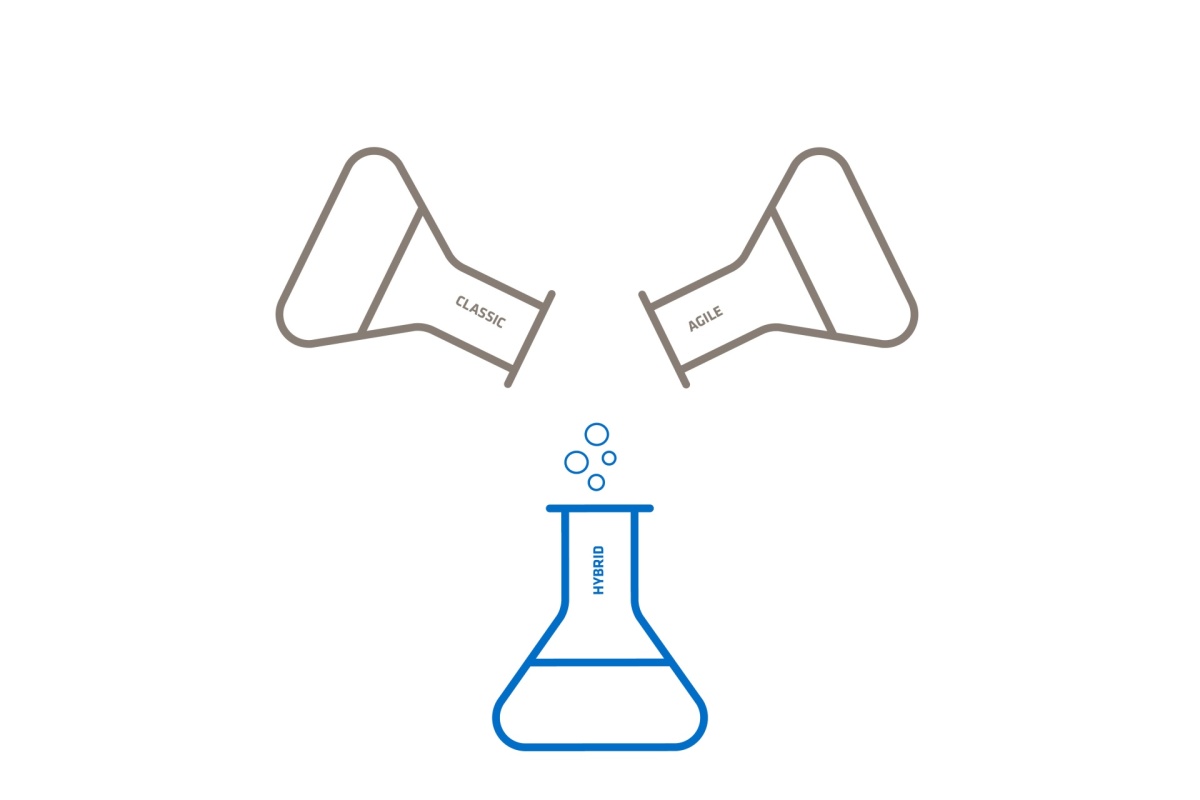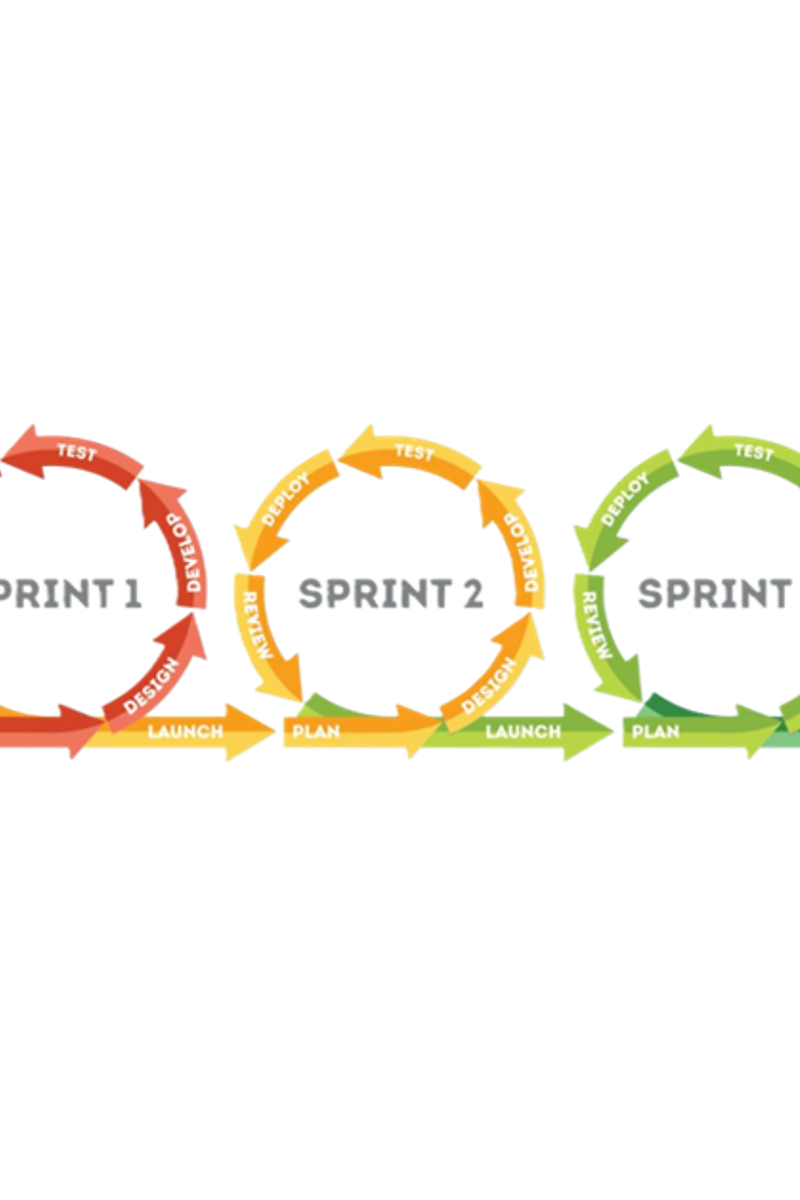25. September 2024 By Simon Meier
Project management: agile, classic - or both?
In the project world, there are various methodological approaches that should be chosen depending on the requirements and characteristics of the project. The two most prominent methods are classic and agile project management. Both approaches have their advantages and disadvantages and the decision on which method to go with depends heavily on the specific requirements of the project and the framework conditions. Let's take a look and find out which method is best suited to your project.
Classic project management
Classic project management, also known as the waterfall method, follows a sequential process. The phases are run through one after the other, from planning and execution to quality assurance and the final phase. This method is particularly suitable for projects in which the requirements are clearly defined and are unlikely to change significantly during the course of the project.


Here are some scenarios in which traditional project management can shine:
- The requirements are clear from the outset and do not change fundamentally
- Frequent feedback is not necessary to successfully implement the project
- The project is carried out in an environment that is not subject to rapid changes
- The development of external factors, such as new technologies or competing offers, generally has less influence on the success of the project
- The project has few dependencies and little complexity, unexpected problems usually do not occur
Advantages:
- The planning and implementation of the project is clear and structured
- The linear nature facilitates the management and control of the project, as well as resource planning
- This approach enables the implementation of projects in sectors that are subject to strict regulatory requirements
Disadvantages:
- The fixed and sequential approach prevents the project from being able to react flexibly to unforeseen changes
- Changes can be very costly and time-consuming
- The long feedback cycles increase the risk that the result will not meet expectations
- Since the requirements must be documented before development, more documentation effort and a longer preparation time is required
- There is a risk that the predefined requirements will already be obsolete or outdated by the time of development
Agile project management
Agile project management, on the other hand, is more flexible and designed to incorporate internal findings from development as well as external drivers, such as customer requirements, framework conditions and market developments into the project as early as possible. It is also better suited to dealing with "unknown unknowns", i.e. problems or issues that one does not even know about - factors that we cannot foresee, as they lie outside our experience and our current level of knowledge.
With the agile approach, the project is implemented in short iterations, which enables continuous adaptation to changing conditions. To enable fast feedback cycles, a "minimum viable product" (MVP) is developed: a product version that offers just enough functions to provide added value for users. The aim here is to determine as quickly as possible whether the product or service is popular with customers. This MVP is then developed iteratively and incrementally.

Here are some scenarios in which agile project management is recommended:
- In dynamic environments where requirements change frequently
- When collaboration and continuous feedback from stakeholders during the project is important and possible
- When requirements are difficult to predict, agility is essential in order to incorporate newly acquired knowledge into the project
- In highly complex projects where numerous "unknown unknowns" have to be overcome
Advantages:
- Agile project management enables a low-risk and explorative approach to unknown and complex topics
- Less effort is required in the preliminary documentation of the requirements, as the documentation is created during the course of the project
- The risk of obsolete or outdated requirements is minimized
- New findings and reactions to changes can be implemented quickly
- There is a higher probability of meeting the needs and wishes of stakeholders
- A faster "time-to-market" can be achieved
Disadvantages:
- Successful application requires an agile mindset on the part of all project members, which is based on the values and principles of agile methods, such as Scrum and the agile manifesto
- An agile way of working requires a lot of communication and close collaboration within the team and with stakeholders, which may not be the case depending on the framework conditions and can lead to an unsatisfactory result
- When scaling and deploying multiple self-organized teams, new challenges and complexities in coordination can arise that need to be overcome - this is where an agile coach provides the necessary support
- Agile project management cannot be used everywhere because, depending on the industry, mandatory legal regulations may not compatible with agile working methods
Hybrid project management
Both the classic and the agile approach have their advantages and disadvantages. So the question arises: is there a way to combine the advantages of these two approaches?
The answer: hybrid project management! While agile methods such as Scrum promote flexibility and adaptability, traditional approaches such as the classic waterfall model offer structure, clear phases and more control. Hybrid models therefore seek a middle ground that enables teams to react to changes and explore new things, while also ensuring the usual control over the project process from traditional project management.


Hybrid approaches can be used in a variety of ways, but there are also constellations in which they can be particularly helpful:
- Large and complex projects: Hybrid project management is particularly suitable for projects that require a clear structure but also need to respond to changing requirements.
- Industries with strict regulatory requirements: In industries such as healthcare or aviation where strict regulations apply, integrating traditional and agile approaches enables compliance with standards while adapting to changing requirements.
- Product development: Hybrid models are well suited to the development of products where clear phases are necessary, but where there is also room for innovation and improvement.
To gain a better understanding of hybrid models, here are a few examples:
adesso Schweiz - your hybrid project management partner for success
The successful implementation of any project requires careful consideration of the methods used and their possible combinations. It is crucial to note that the combination of traditional project management with agile approaches brings not only opportunities but also challenges for your company. Overcoming these challenges requires a high level of expertise and experience. It is therefore vital to have a partner at your side who masters both approaches and can find and implement the right mix for your project. Contact us so that we can work together to ensure the success of your project.






